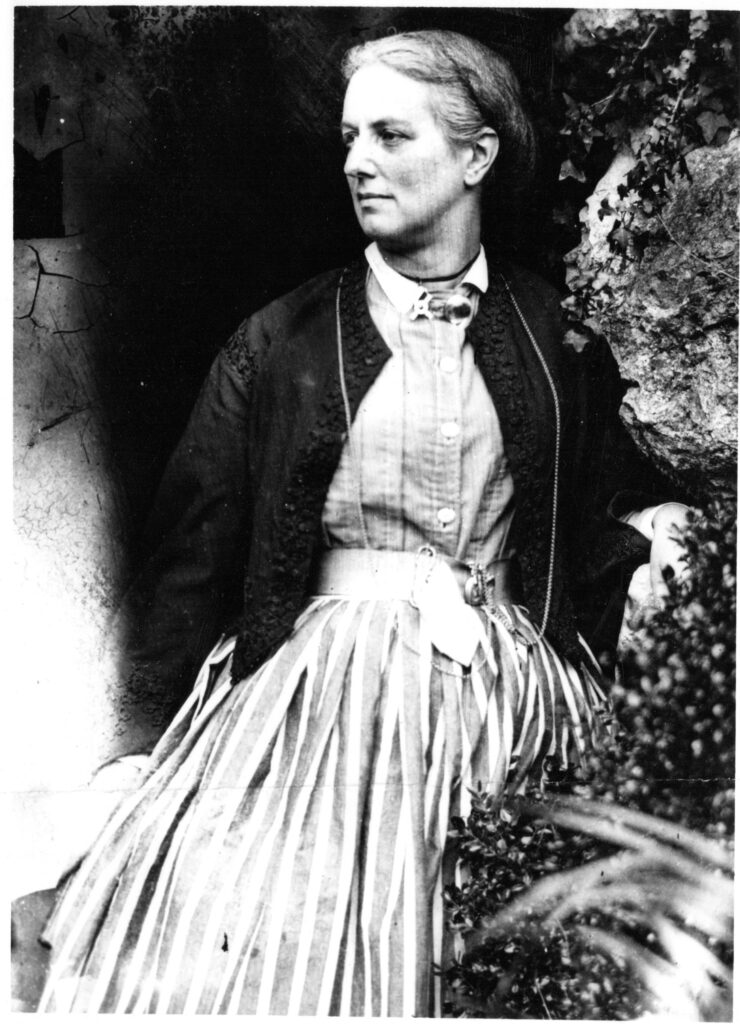
Charlotte Yonge (1823–1901) lived in the small Hampshire village of Otterbourne all her life but her best-selling novels brought her fame and a world-wide readership. A clever and creative child, she knew early on that her talent was for writing, and began in her teens with short stories for children. She published several novels before The Heir of Redclyffe hit the mood of the moment in 1853 and made her name with its depiction of chivalry in the modern age. It was read by everyone from servants to soldiers, from priests to princesses.
Other successful books followed, some targeted at children or teenagers, others at adults: Gladstone, Morris and Tennyson were among Yonge’s readers. Yonge always acknowledged family friend the Revd John Keble as a crucial influence upon her religious formation and her writing career. Keble, famous as the poet-author of The Christian Year, was deeply involved in the impetus to take Anglicanism in a more High Church direction – something congenial to the traditions of the Yonge family, and holding a deep appeal for Charlotte. She regarded herself as a proponent of such views, promoting them with a tact and delicacy rare in nineteenth-century fiction.
Yonge had wide-ranging intellectual interests and her non-fiction includes many works of history and biography. Her fascination with the natural history and customs of her own locality is memorably recorded in An Old Woman’s Outlook in a Hampshire Village. For over 40 years she edited a magazine, The Monthly Packet, aimed at teenage girls.
Nowadays Charlotte Yonge’s family chronicle novels delight readers by their lively depiction of a large cast of characters, every one individualised with their own features and foibles and their own way of talking. They change and develop, meeting setbacks and enjoying successes: so vividly does Yonge portray them that they become the friends and companions of her readers.
For information about CMY’s life and works see www.cmyf.org.uk. The Bicentenary Celebration Booklet includes maps and information about buildings Yonge would have known in Otterbourne and the neighbouring village of Hursley.
Reading Charlotte M. Yonge’s works today
Yonge’s family chronicle novels still attract a devoted readership. Their charm lies in the lively depiction of a large cast of characters, every one individualised with their own features and foibles and their own way of talking. Yonge shows them as they change and develop, meeting setbacks and enjoying successes – and her great and enduring talent is to make her readers believe in them and care for them as real people. A good starting point for present-day readers is The Heir of Redclyffe: it has a well-constructed plot and a small number of characters. Alternatively, The Daisy Chain offers varied portraits of a large family who lose their mother at the start of the book. Foremost among the children is Ethel May: awkward, intense, and deeply committed to her ideals, she is one of Yonge’s most loved characters. This book’s sequel, The Trial, shows Ethel grown up, and represents Yonge’s foray into the ‘sensation novel’ genre, with a plot involving family rifts, murder and repentance. Countess Kate (about a little girl who finds that inheriting a title is not the fun she expected) and The Little Duke, about the childhood of Richard of Normandy, ancestor of William the Conqueror, demonstrate Yonge’s lively story-telling for children. All of these novels are available in electronic versions (Project Gutenberg), and many more of her books can be bought online in second-hand editions. A few are also available in audio.